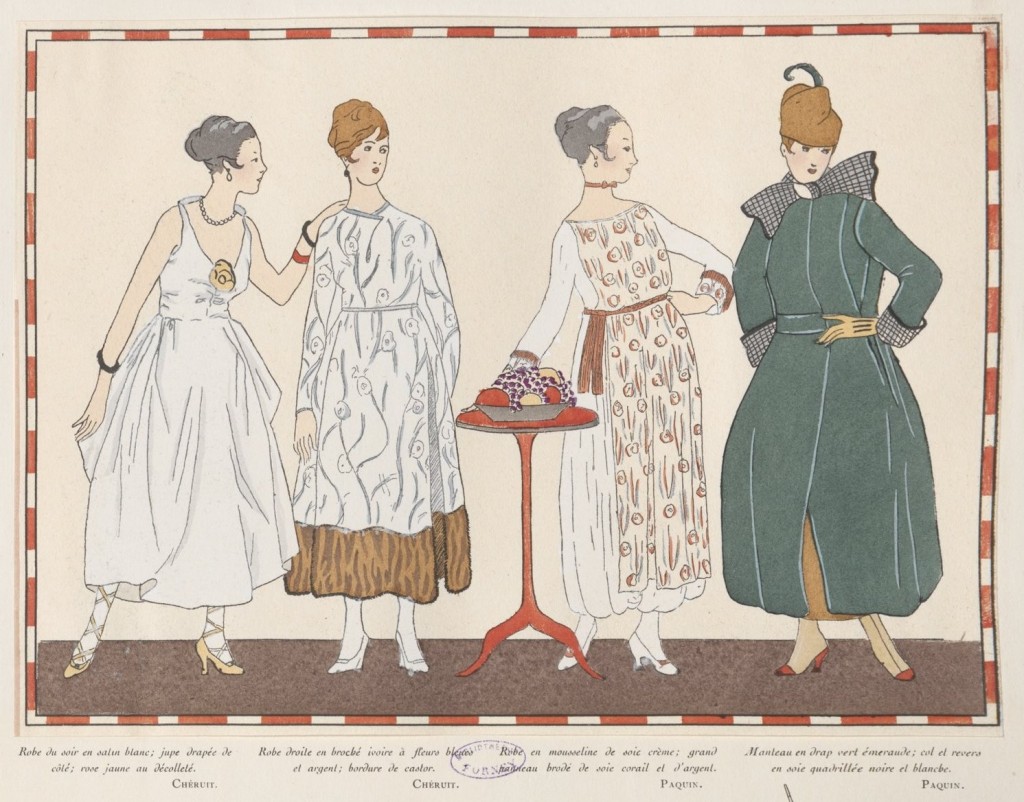The December 1916 issue of Les Élégances Parisiennes, in the section on the fashion industry, gave some figures which revealed the scale of the problem facing French fashion. In 1913, German textile and clothing manufacturers had exported goods worth £60,142,000 to England, and 652 million rubles of goods to Russia. The sums for French manufacturers were £46,533,000 and 57 million rubles – 77% and 9% of the German exports. The committee for the French fashion industries was hoping to close the gap by establishing trade fairs in Paris and in Lyon, and by clamping down on sales to middlemen. There was an assumption that German products were being passed off as ‘Paris fashions’, which was what the customers wanted. But it seems likely that these large sales were gained by providing ready-to-wear garments for the mass market, rather than the one-off creations of Paris couture.
Too often, the fashion press in this period writes as if couture houses were the only source of fashionable clothing, ignoring the competition from independent dressmakers, department stores, and mail-order companies. This is addressed by an article in this issue which discusses trends in millinery through an imagined dialogue between a Parisian woman and an American fashion buyer. The American complains that she has found no hats in Paris that would sell in the USA – to which the Frenchwoman replies that it’s difficult for milliners to be inventive when the main headgear requested by their clients is a mourning veil. Only foreigners and the vulgar nouveaux riches are buying fashionable hats. The American’s response is sharp: foreigners and nouveaux riches are exactly the clients that Paris fashion should be courting! Milliners need to come up with new shapes and new materials and trimmings – otherwise women will buy a plain hat from a department store and trim it themselves, and the fashionable trade will collapse. If there was little new in Paris millinery the same could not be said about shoes; another article in this issue describes day and evening shoes from Hellstern (below) made in a new shape, buttoning down both sides of the vamp, and decorated with cutwork and contrasting embroidery. It is likely that these impractical items were aimed at the export trade rather than at Frenchwomen living in war conditions.
The article on fashion trends in this issue confirms the dominance of the wide, ‘barrel’ line – in spite of its unflattering silhouette, narrowing from hips to knees. This is illustrated in couture gowns in rich silk brocades, trimmed with lace and fur. The cut of these gowns, with wide necklines, long straight sleeves, and loose waistlines, was so simple as to be well within the reach of amateur dressmakers. The unfitted bodices, often covered by hanging tabards of contrast fabric, also made this shape eminently suitable for mass production in stock sizes. In images such as the one above we can see the origins not only of 1920s styles, but of ready-to-wear clothing as a leading force in the fashion industry.
http://gallica.bnf.fr/ark:/12148/bpt6k65584939?rk=150215;2





















